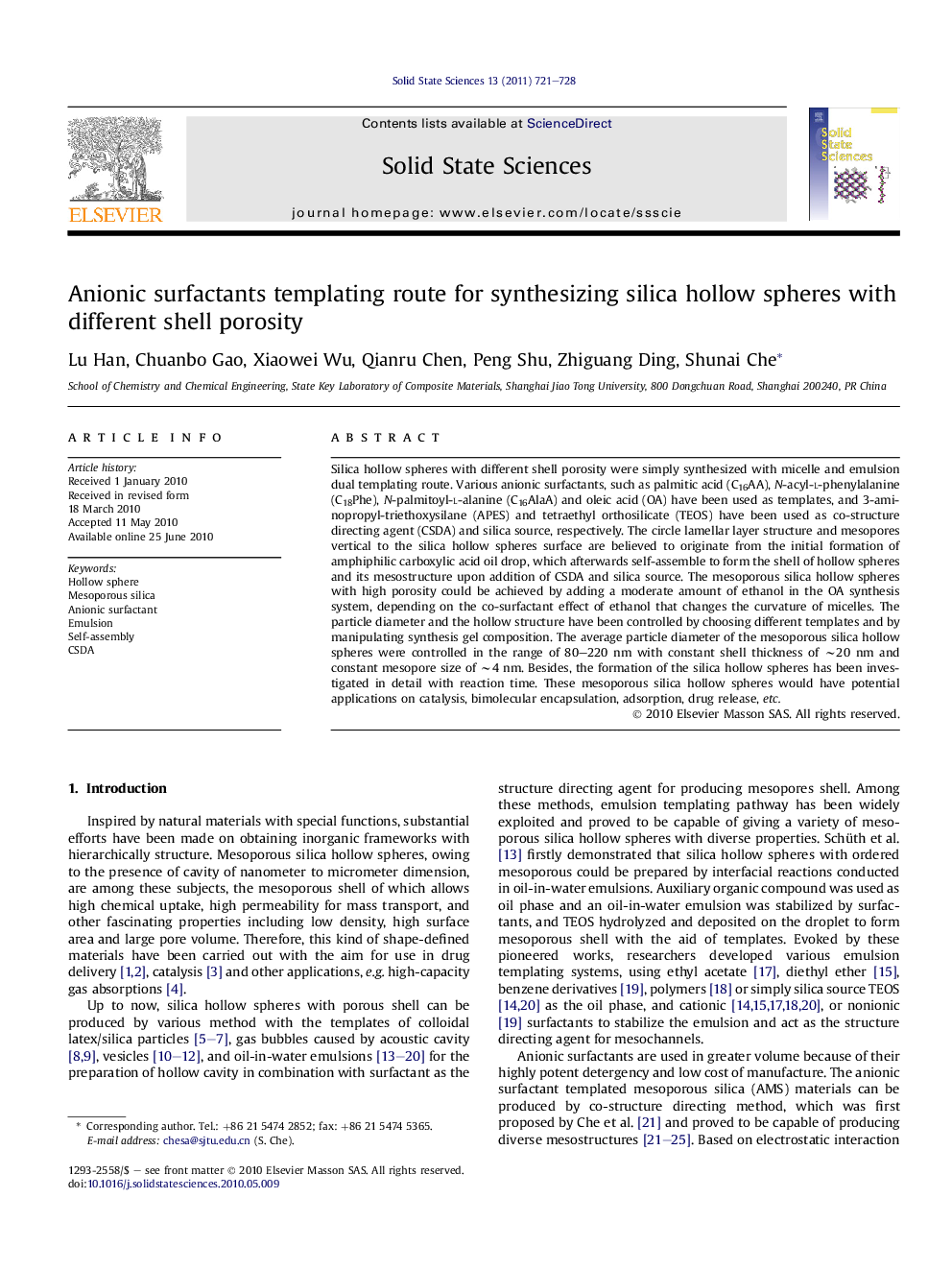| Article ID | Journal | Published Year | Pages | File Type |
|---|---|---|---|---|
| 1505825 | Solid State Sciences | 2011 | 8 Pages |
Silica hollow spheres with different shell porosity were simply synthesized with micelle and emulsion dual templating route. Various anionic surfactants, such as palmitic acid (C16AA), N-acyl-l-phenylalanine (C18Phe), N-palmitoyl-l-alanine (C16AlaA) and oleic acid (OA) have been used as templates, and 3-aminopropyl-triethoxysilane (APES) and tetraethyl orthosilicate (TEOS) have been used as co-structure directing agent (CSDA) and silica source, respectively. The circle lamellar layer structure and mesopores vertical to the silica hollow spheres surface are believed to originate from the initial formation of amphiphilic carboxylic acid oil drop, which afterwards self-assemble to form the shell of hollow spheres and its mesostructure upon addition of CSDA and silica source. The mesoporous silica hollow spheres with high porosity could be achieved by adding a moderate amount of ethanol in the OA synthesis system, depending on the co-surfactant effect of ethanol that changes the curvature of micelles. The particle diameter and the hollow structure have been controlled by choosing different templates and by manipulating synthesis gel composition. The average particle diameter of the mesoporous silica hollow spheres were controlled in the range of 80–220 nm with constant shell thickness of ∼20 nm and constant mesopore size of ∼4 nm. Besides, the formation of the silica hollow spheres has been investigated in detail with reaction time. These mesoporous silica hollow spheres would have potential applications on catalysis, bimolecular encapsulation, adsorption, drug release, etc.
Graphical abstractFigure optionsDownload full-size imageDownload as PowerPoint slide
